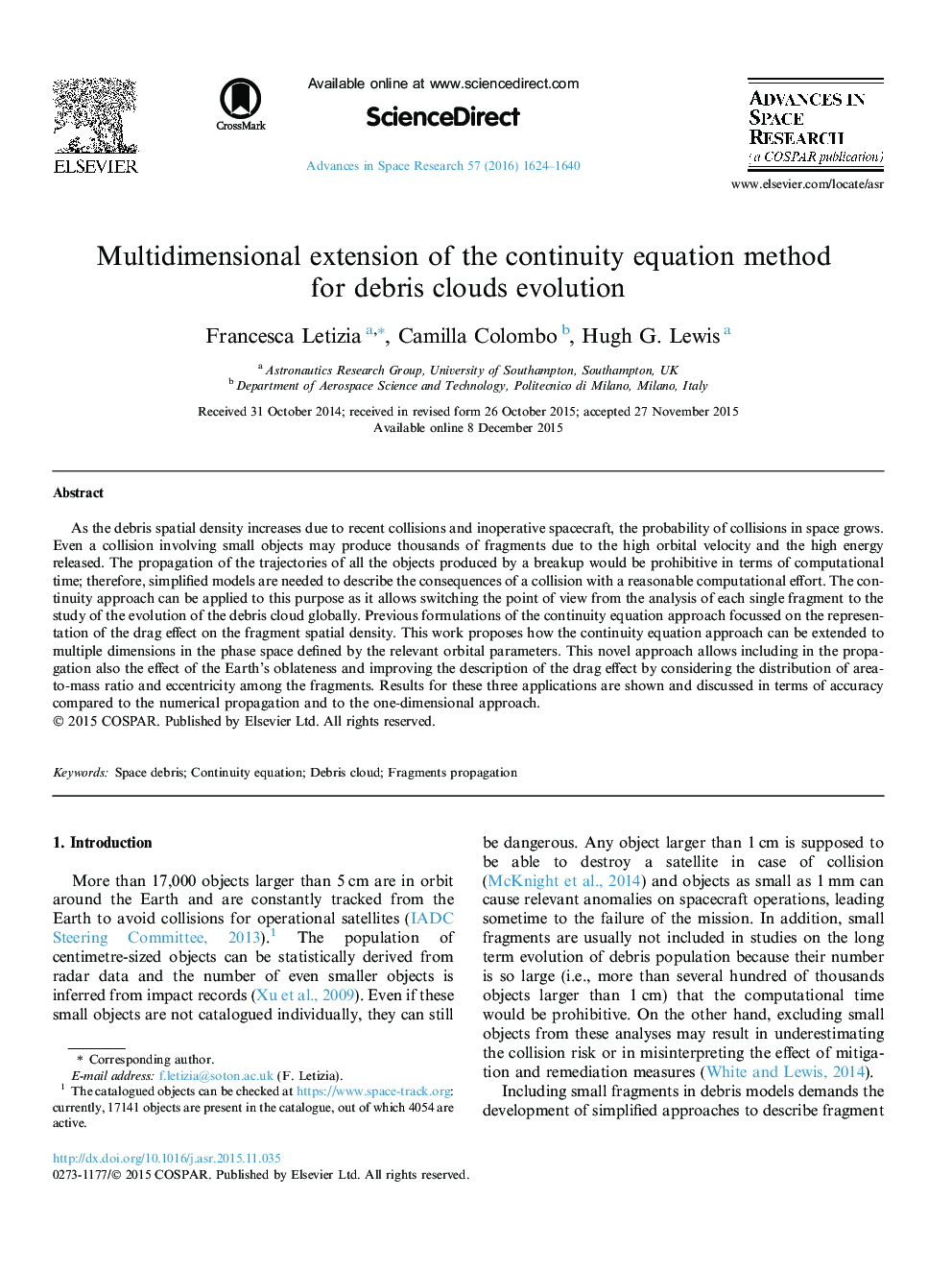| Article ID | Journal | Published Year | Pages | File Type |
|---|---|---|---|---|
| 1763378 | Advances in Space Research | 2016 | 17 Pages |
As the debris spatial density increases due to recent collisions and inoperative spacecraft, the probability of collisions in space grows. Even a collision involving small objects may produce thousands of fragments due to the high orbital velocity and the high energy released. The propagation of the trajectories of all the objects produced by a breakup would be prohibitive in terms of computational time; therefore, simplified models are needed to describe the consequences of a collision with a reasonable computational effort. The continuity approach can be applied to this purpose as it allows switching the point of view from the analysis of each single fragment to the study of the evolution of the debris cloud globally. Previous formulations of the continuity equation approach focussed on the representation of the drag effect on the fragment spatial density. This work proposes how the continuity equation approach can be extended to multiple dimensions in the phase space defined by the relevant orbital parameters. This novel approach allows including in the propagation also the effect of the Earth’s oblateness and improving the description of the drag effect by considering the distribution of area-to-mass ratio and eccentricity among the fragments. Results for these three applications are shown and discussed in terms of accuracy compared to the numerical propagation and to the one-dimensional approach.
